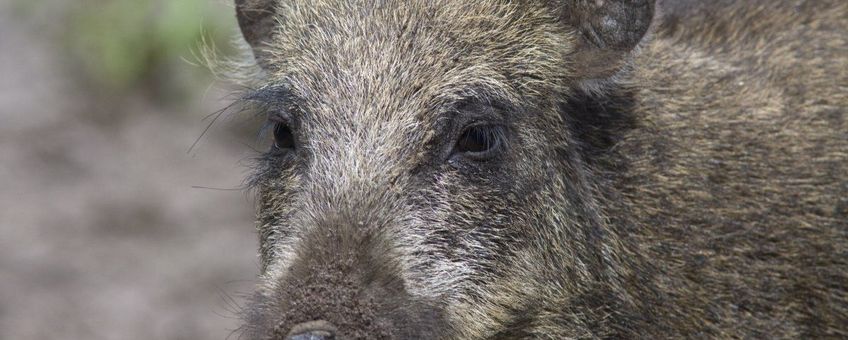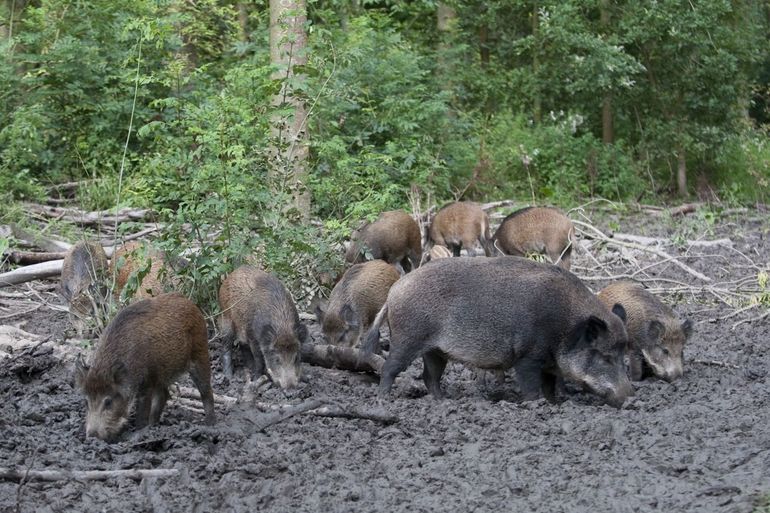
Wild heart: urban wild boars prefer natural food resources
Leibniz Institute for Zoo and Wildlife ResearchMore and more wildlife occurs in cities, also in Berlin, which is often called to be 'the capital of wild boar'. Twenty percent of the area of Berlin is covered with extensive forests, divided into four main forestry areas which create optimal conditions for wildlife. But wild boars do not only have a high population density in urban forests. They can also be regularly observed in urban parks or private gardens, where they sometimes even give birth to their piglets.
Wild boars as omnivorous species are well known for their flexible diet; the consumed food usually reflects the availability of food resources within their habitat. So far, it was assumed that attractive, easily accessible anthropogenic food resources such as garbage or direct feeding were the main reason for wild boars to enter urban areas. Similar observations were conducted for other wildlife species such as black bears in the USA, macaques in India and foxes in urban habitats within Europe. To test this assumption, the composition and amount of energy of the diet of wild boars in Berlin and rural areas of Brandenburg was analysed by a research team from the Leibniz-IZW. Altogether, 247 stomachs of hunted wild boars were collected and the landscape of the sample locations was investigated.
"Surprisingly, wild boars in Berlin and Brandenburg consume almost exclusively natural food such as acorns, insect larvae, fibre or maize, while food items from potential anthropogenic origin are rare. Only in four out of 247 stomachs we found pieces of bread with salami and cheese," reports Milena Stillfried, PhD student at the Leibniz-IZW and lead author of the study. But her analyses still show differences between urban and rural areas. Not only the landscape composition, but also the availability of natural food sources differs: in Berlin, mainly mast producing mixed forests grow, where wild boars find acorns or beechnuts, whereas Brandenburg is dominated by agricultural areas and coniferous forest with rather poor food supply. The amount of energy of stomach contents was higher in Berlin than in Brandenburg, which is probably a result of increased acorn intake. Analyses of macronutrients such as protein, fat, starch or fibre show that not the life in the city or countryside per se, but the landscape composition within the used areas determines the food quality. As a result, the amount of starch increased in wild boar stomachs with increasing percentage of agricultural areas, while the amount of protein decreased in coniferous forests. Wild boars in rural areas seemed to benefit from human associated landscape structures as stomach contents with a high amount of energy were found in rural areas with a high percentage of asphaltic surfaces.

While wild boars in rural areas avoid encounters with humans, they learn to tolerate human presence in urban areas and are able to find food and shelter within human dominated landscapes. However, it is unclear if they will continue to use mainly natural habitat or if they might change their behaviour. “Due to the high learning ability of wild boars, it is important to secure garbage bins and prevent direct feeding, because wild boars are likely to shift their diet towards anthropogenic food sources as soon as those are easy to access or natural resources become rare,” say Stephanie Kramer-Schadt and Sylvia Ortmann, who initiated the new research focus 'urban ecology' at the Leibniz-IZW in 2012.
To prevent conflicts between humans and wild boars, urban citizens should meet some rules. Wild boars in urban areas are known for causing damage in private and public parks and gardens when searching for food and a lot of people are scared of wild boars, which are usually very peaceful. The current scientific findings about the nutrition of wild boars in Berlin and Brandenburg help to understand the general process, how wildlife species adjust to urban areas. For public authorities, the results can be an important data basis for improving human-wildlife-coexistence.
Text: Leibniz-IZW
Photos: Mark Zekhuis, Saxifraga; Hugh Jansman, Wageningen University & Research
